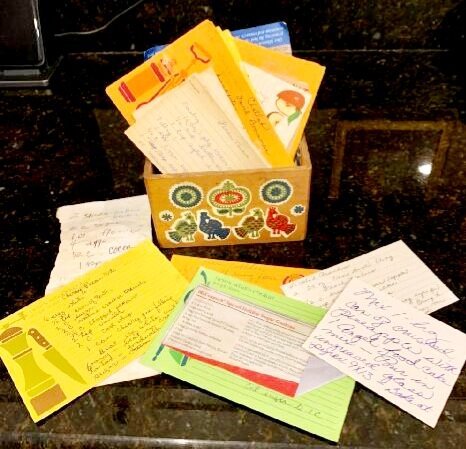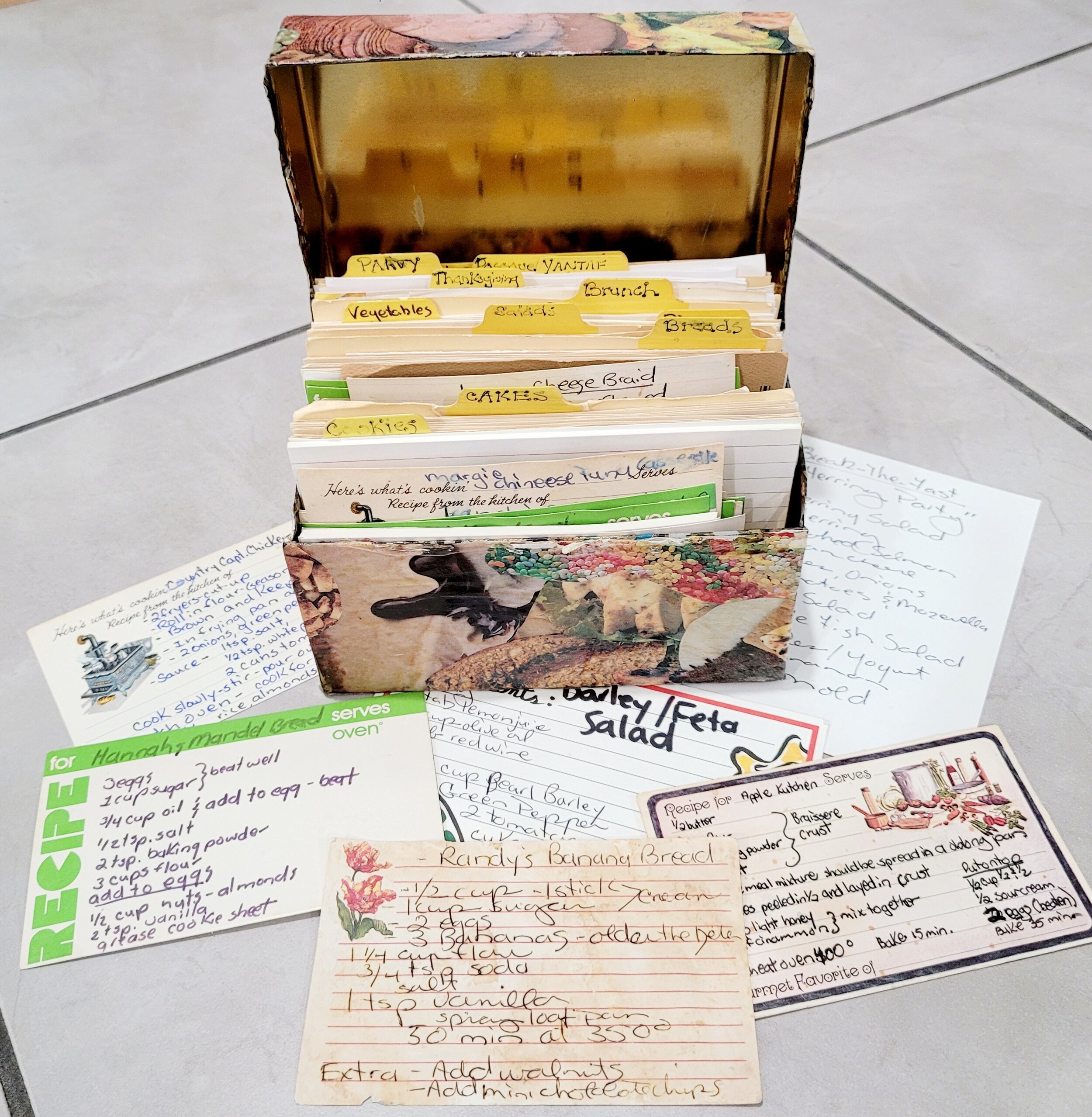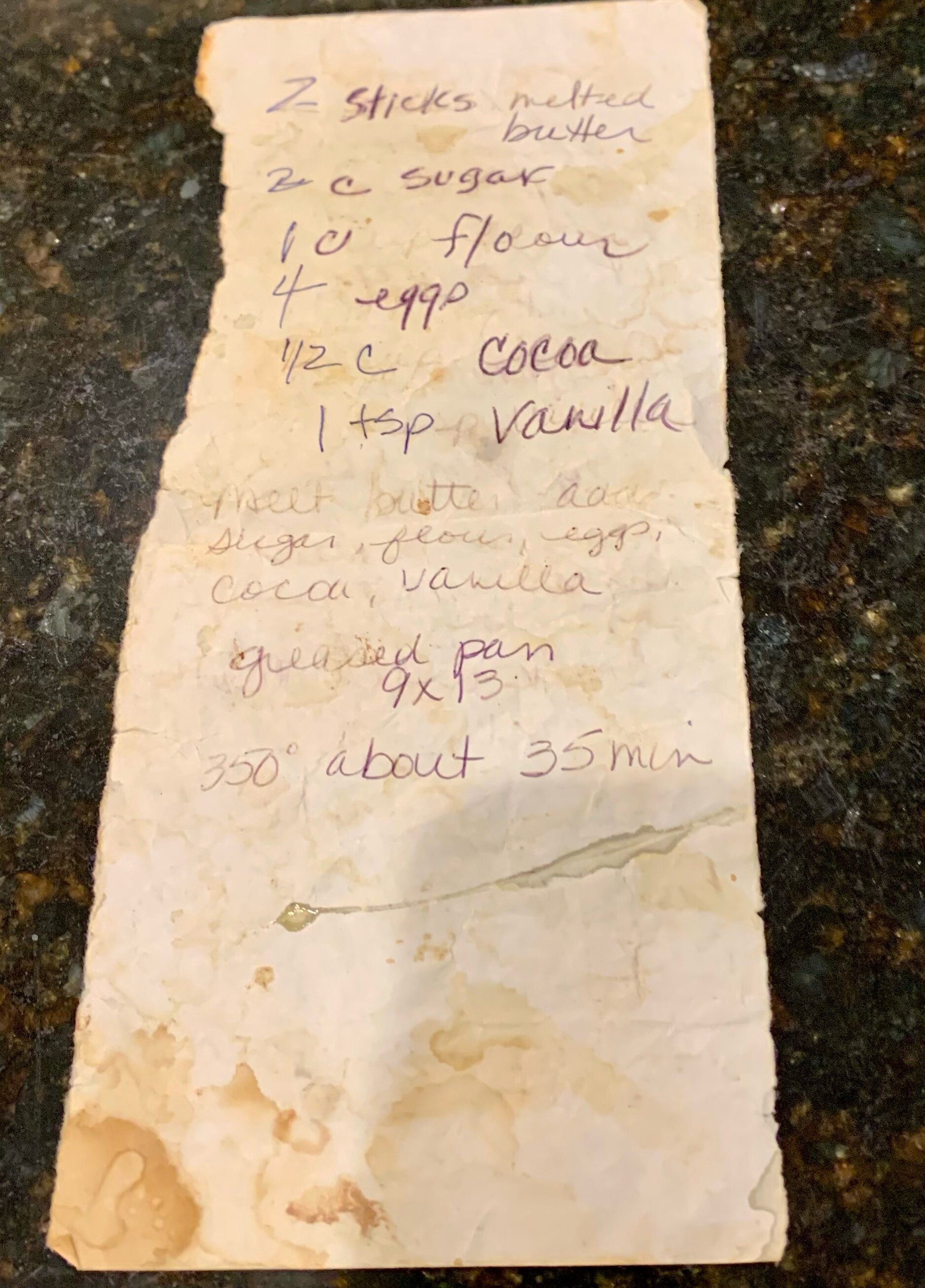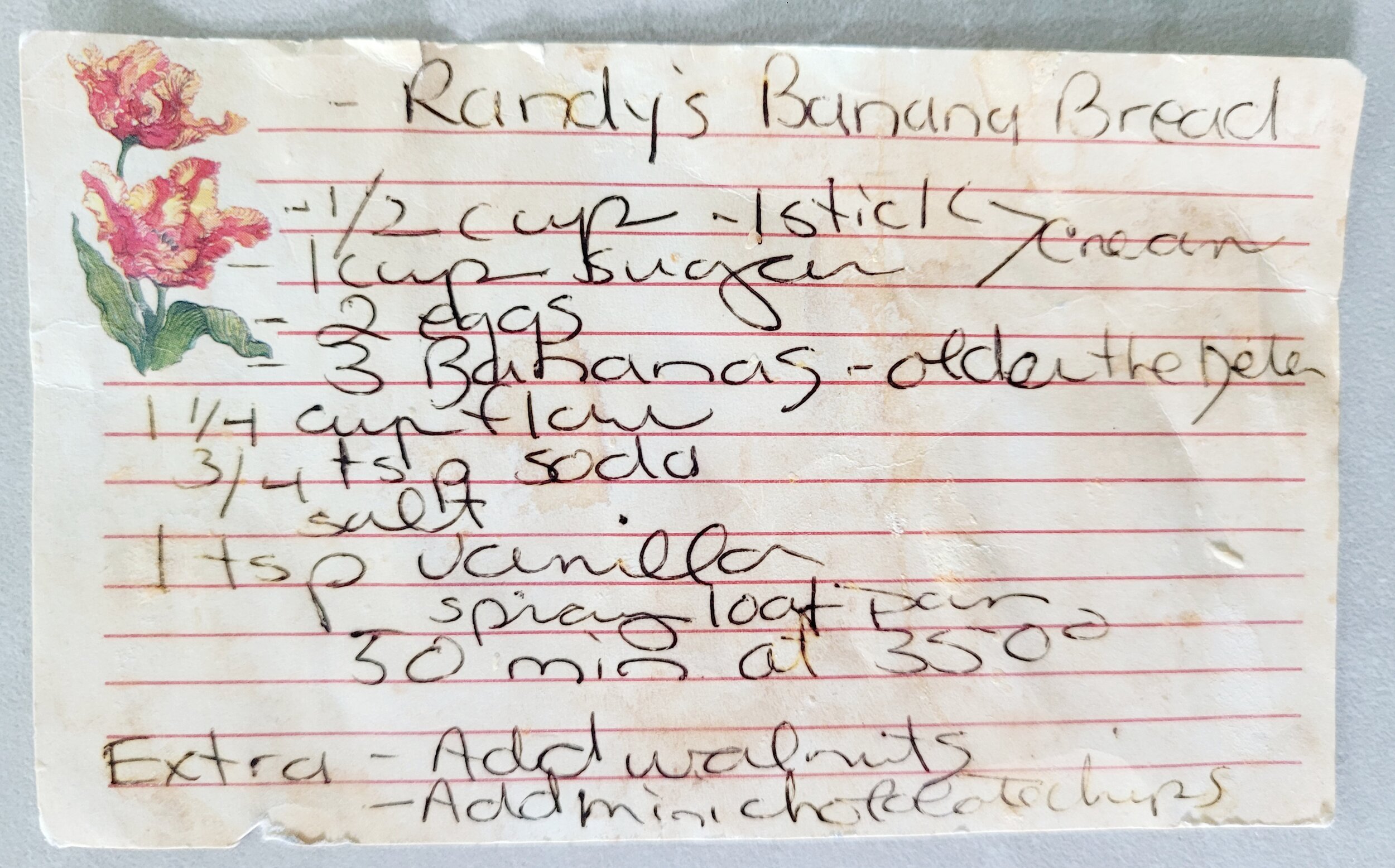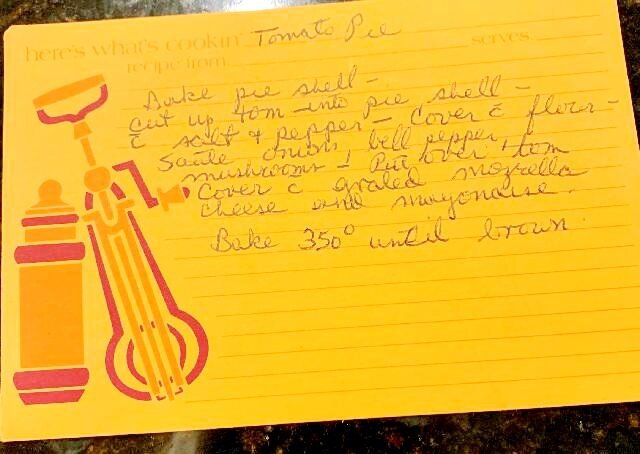Saving Handwritten Recipes - Summer Treats: Banana Bread and Tomato Pie
By Lyssa Kligman Harvey
Miriam Gordin’s recipe file box, ca.-1960. Image courtesy Rachel Gordin Barnett
When my mother, Helene Firetag Kligman (OBM), moved from her home of 50 years, one of the first things that I wanted to save was her little 4 x 6 file box of handwritten recipes and recipes that she painstakingly typed on a cartridge typewriter which, I find very impressive. She had five children, was a wonderful mother, an immaculate homemaker, excellent cook and baker, made dinner every night and still found time to type her favorite recipes! She was a “bulabusta” a Yiddish word for a homemaker. Okay, this is funny looking back, but before we sold my parents’ house, we fumigated the house for bugs and my sister, Heidi Kligman Lovit, and I dumped all the recipes in a freezer bag and put them in the freezer. Some index cards survived the freezer, some didn’t. I cherish the recipe cards that have Mom’s identifiable scribble handwriting and of course her typed cards too.
Lyssa Kligman Harvey’s decoupage recipe file box, ca.-1980. Image courtesy Lyssa Kligman Harvey
Family recipes and cookbooks hold a special place for many. A well-loved frayed cookbook and handwritten recipes passed down from one generation to the next help us remember the people that used them. Like my mother, and many women I collect recipes. I have stacks of recipes saved in files, folders and yes, in three different size file boxes. I have cut-out recipes from newspaper and magazines. I have collected recipes from friends written on the back of menus, notebook paper and napkins. I pride myself on being organized and like to document all things. But my crazy collection of recipes gives me anxiety! I fear that I will be forever cursed by these unorganized stacks of paper. Unlike my mother, I have the advantage of the computer to create and save recipes. It is a goal one day to create a personal cookbook for my children and grandchildren of all my favorite recipes. There are many saved recipe files on my hard drive making it simple to save and print recipes for my children, my friends and my supper club “The Gourmet Divas.” But really, it is the handwritten ones that I seem to cherish and repeatedly go back to and use most often. I have a recipe, Randy’s Banana Bread, from Randy Chartash, the husband of my college roommate, Debbie Shapiro Chartash, that I continually pull out of my file box. It is brown with use and butter! This recipe consistently produces very good banana bread, so I use it all the time. My mother wrote (typed) her Rosh Hashanah menu on an index card, and I do the same. I have menus for Yom Kippur “Break-the-Fast” and Thanksgiving with the name of the person who is assigned to bring the dish.
Rosh Hashanah typed menu by Helene Firetag Kligman, 1960. Image courtesy Heidi Kligman Lovit
In her article “Love is a Handwritten Recipe,” published in the May 2020 edition of Garden and Gun magazine, Darcy Orr Sivewright fondly recalled her grandmother’s culinary legacy: “Like any good cookbook, you can spot the most popular entries by how many drips and stains adorn the page…Whether cobbled together in a falling–apart notebook, scribbled on scraps of paper in my family members’ kitchens, or intertwined with their memories of Sunday suppers and school nights, these recipes feel like a stolen glimpse into the life of a woman I wish I’d had more time to get to know.”
Hand-written brownie recipe of Faye Lomansky Levinson and Helene Firetag Kligman, 1960. Image courtesy Rachel Gordin Barnett
As we gathered stories for Kugels & Collards, some of our contributors shared handwritten recipes. The recipes needed to be transcribed and typed for the blog. It felt blasphemous to do this. The solution was to also share photographs of handwritten recipes to save the historical feature of the dish.
Looking back at my collected recipes they seem to time travel from the 1950s to the present and parallel the decades of food trends. It is a nice archive of my personal food history. There are traditional Jewish and contemporary Southern recipes from my mother from the ‘50s, ‘60s, and in the ‘70s, when she became interested in macrobiotics. There are cookbooks and recipes that I started collecting from the ‘70s until the present. My handwritten index cards report of really easy casseroles, quick appetizers, southern desserts and varieties of healthy salads.
Who knows if I ever will have time to put my saved old handwritten, typed, and cut-out recipes into a single document? I hope that these torn and stained recipes will continue to be preserved, because they represent my love language that is food.
Thank you to Rachel Barnett and Heidi Lovit for contributing these handwritten/typed recipes and photos for this blog!
Randy Chartash’s Banana Bread
Cream together:
½ cup butter
1 cup sugar
Add:
2 eggs
3 bananas…the riper the better
1 tsp vanilla
Add:
1¼ cup flour
¾ tsp soda
salt
Spray Loaf Pan
Bake 50 minutes at 350 (may need more if mushy in the middle…check with toothpick)
Note: Add walnuts, pecans, dried cranberries, chocolate chips, as desired.
Randy Chartash’s banana bread recipe, 1990s. Image courtesy Lyssa Kligman Harvey
Miriam Gordin’s Tomato Pie
Frozen pie shell
4-5 ripe tomatoes
8 ounces mushrooms, sliced
1 small, sweet onion, chopped
1 small red bell pepper, chopped
2 cups shredded mozzarella cheese
Salt and pepper to taste
Bake the pie shell according to package directions
Bring a pot of water to a rolling boil. Add tomatoes, one at a time for 15-20 seconds. Scoop out of water and peel and chop.
Saute mushrooms, bell pepper, and onion until soft. Add tomatoes.
Add salt and pepper to the tomato mixture. Pour into the baked pie shell.
Add mozzarella cheese to cover.
Bake at 350 until bubbly.
Miriam Gordin’s tomato pie recipe, 1980s. Image courtesy Rachel Gordin Barnett

